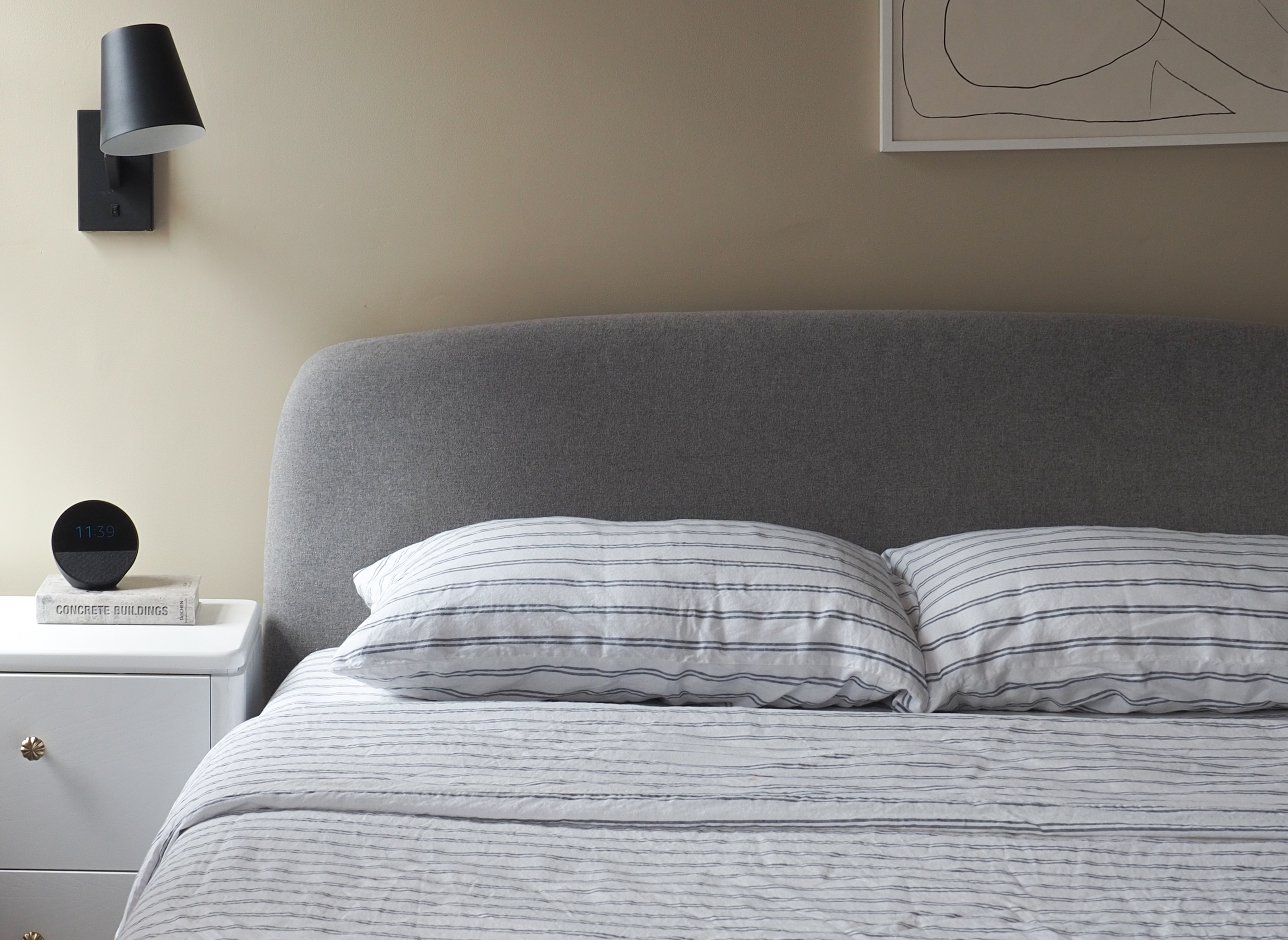
I've got a fair bit of experience with bedding, so when friends or family ask me for some advice about what to choose for dressing their beds, I've got opinions to impart. Often, it comes down to things like whether they should go for linen sheets, and often, I'm not super sure that they should.
Linen is expensive, for one, but it's also quite coarse for the first part of its life cycle — I think its stiffness can be a bit of a shock to the system if you're not used to them. However, there's no denying they look great. It's great then, when you can find the best of both worlds from a bedding brand, and I think this is what Piglet in Bed's bedding offers with its linen blend sheets.
Taking the best parts of both linen and cotton bedding sounds good in theory, but there is always going to be compromises, so in putting Piglet in Bed's Ivory Kemptown Linen Blend Striped bed linen to the test, I wanted to see how it compared to both pure linen and pure cotton sheets I'd also been testing.
This is the first version of my Piglet in Bed bedding review you're reading, meaning it's been inspected, washed, and slept in for at least two weeks. This review will be updated a little later in the year, once the bedding has been used for a total of four cumulative weeks. It's important, especially for linen bedding, which tends to be a little coarser to begin with, and softens after multiple washes and uses.
You can purchase the pieces of the Kemptown bedding set individually, or choose a mix-and-match bundle to piece together the bedding set-up of your dreams.
Is Piglet in Bed's Linen Blend Good Quality?
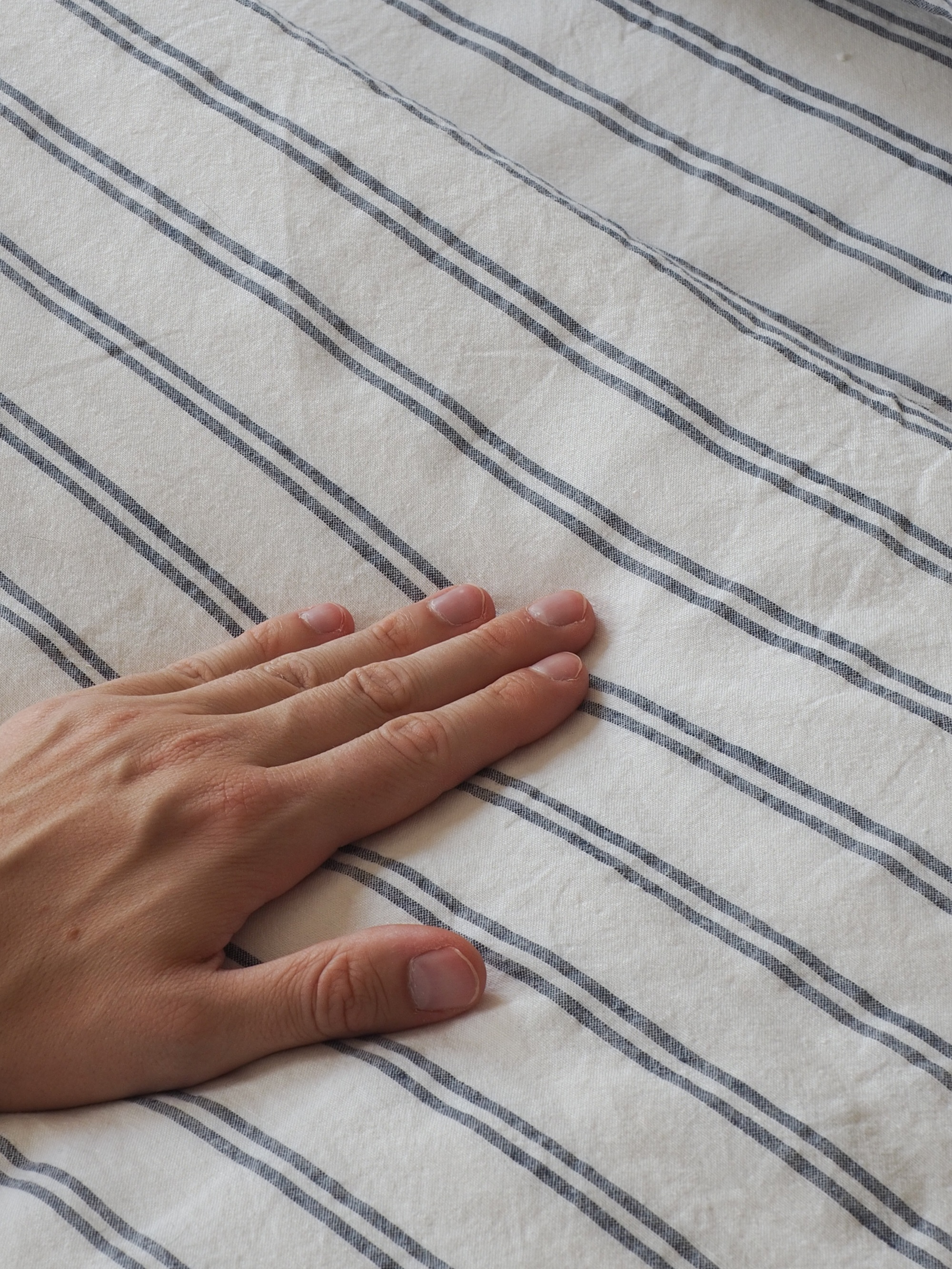
Before sleeping in this bedding, I like to put it to the test by getting a little more hands on with the sheets.
Does it feel cool to the touch? This is actually a pretty good sign that the bedding will be breathable and help regulate your temperature. For this linen blend bedding, perhaps predictably, it did feel cool to the touch, but not as cool as the pure linen sheets, yet cooler than the cotton ones I tested.
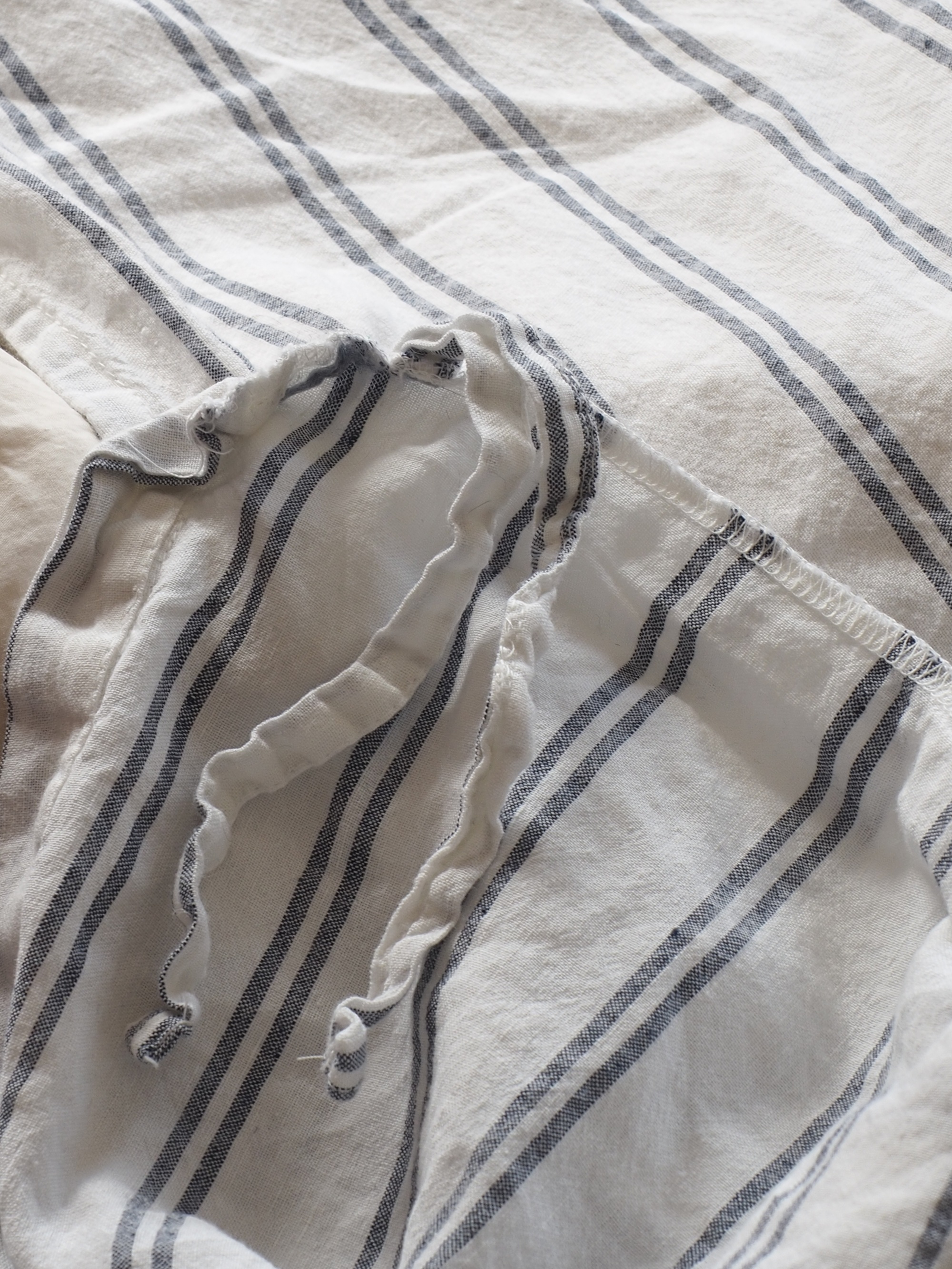
I always think you can get a measure of quality by looking inside the sheets as well, both at the tidiness and the extent of the seam stitching. Neat, reinforced stitches are a good indicator of the best linen sheets — and suggest your bedding might have better durability.
For Piglet in Bed's linen blend bedding, I found the stitching was particularly neat; however, I did note that while the edge seam did feel sturdy and secure, there wasn't a reinforcing straight or chain stitch, as you'll see in some other bedding.
What else you'll find inside, however, is a nice surprise. Piglet in Bed's bedding has ties in the corner, so you attach them to the top of your duvet and keep it in place, to stop the duvet from shifting down and feeling lumpy. It's designed to work with Piglet in Bed's own British wool duvet, but I think you could easily sew a small loop to the top of your duvet if you wanted to make use of them.
How Is Piglet in Bed's Bedding to Sleep In?
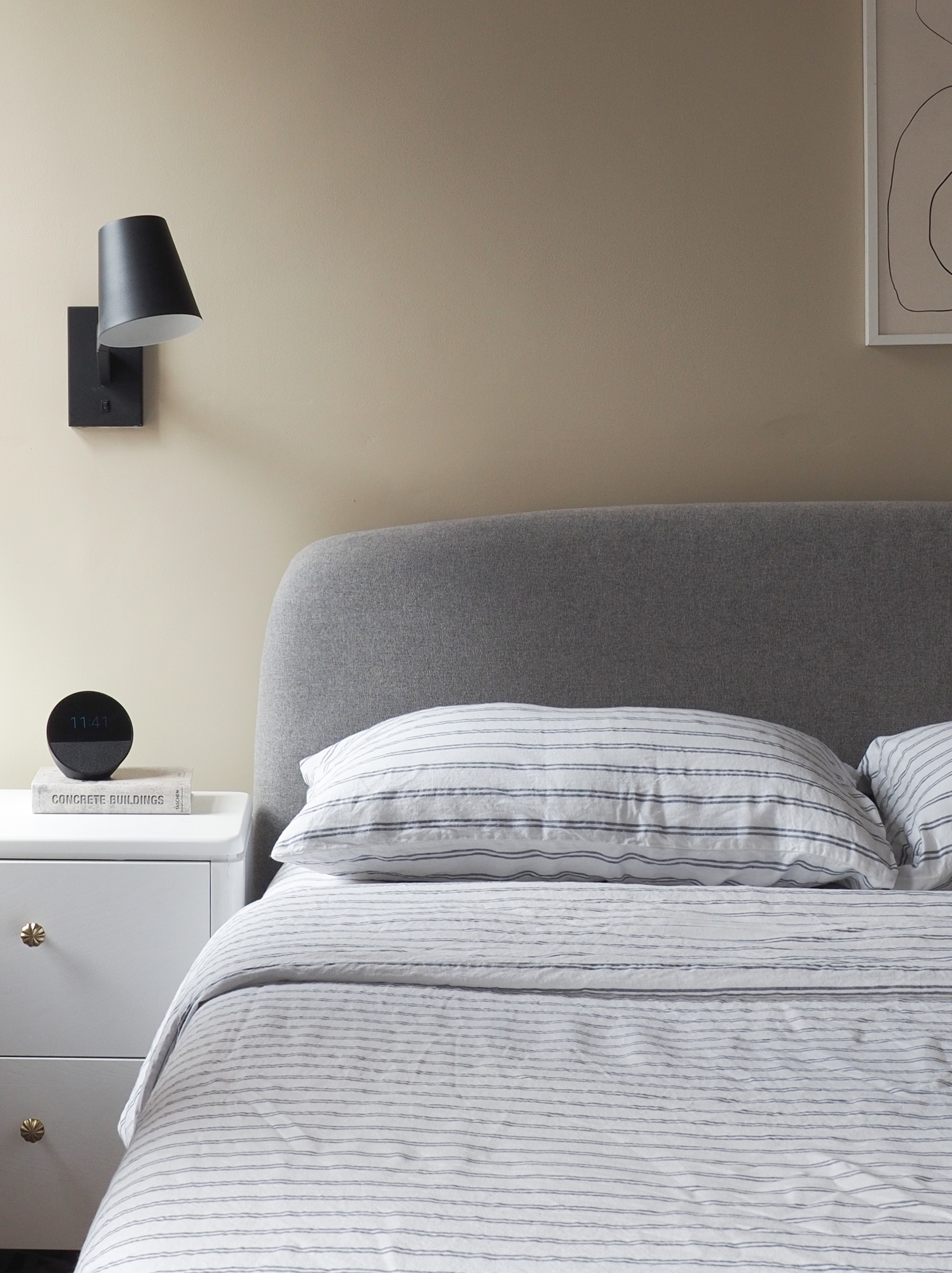
I tested Piglet in Bed's linen blend bedding for two weeks, pre-washing before its first use, and between the first and second weeks. Just as a reminder, linen bedding is generally a little coarser to start with — this linen blend had the sense to a degree, but was noticeably less crisp and rough than pure linen sheets I had also tested after the first wash. By the second wash, it felt significantly softer and more comfortable.
In comparison to some of the linen bedding I'd tested, I found these sheets felt a little heavier and potentially less breathable. As a hot sleeper, I prefer linen that's a little lighter, especially during the hotter summer months (and this was partially tested in a heatwave with temperatures between 24°C and 18°C during the night). However, as a play off against the softness it provides, I think it strikes a good middle ground.
I usually make a note of how long it is before the bedding starts to feel 'saggy', as linen does after a certain amount of time being slept in. I'd say you would need to wash these bed sheets after around 7-8 days from that perspective.
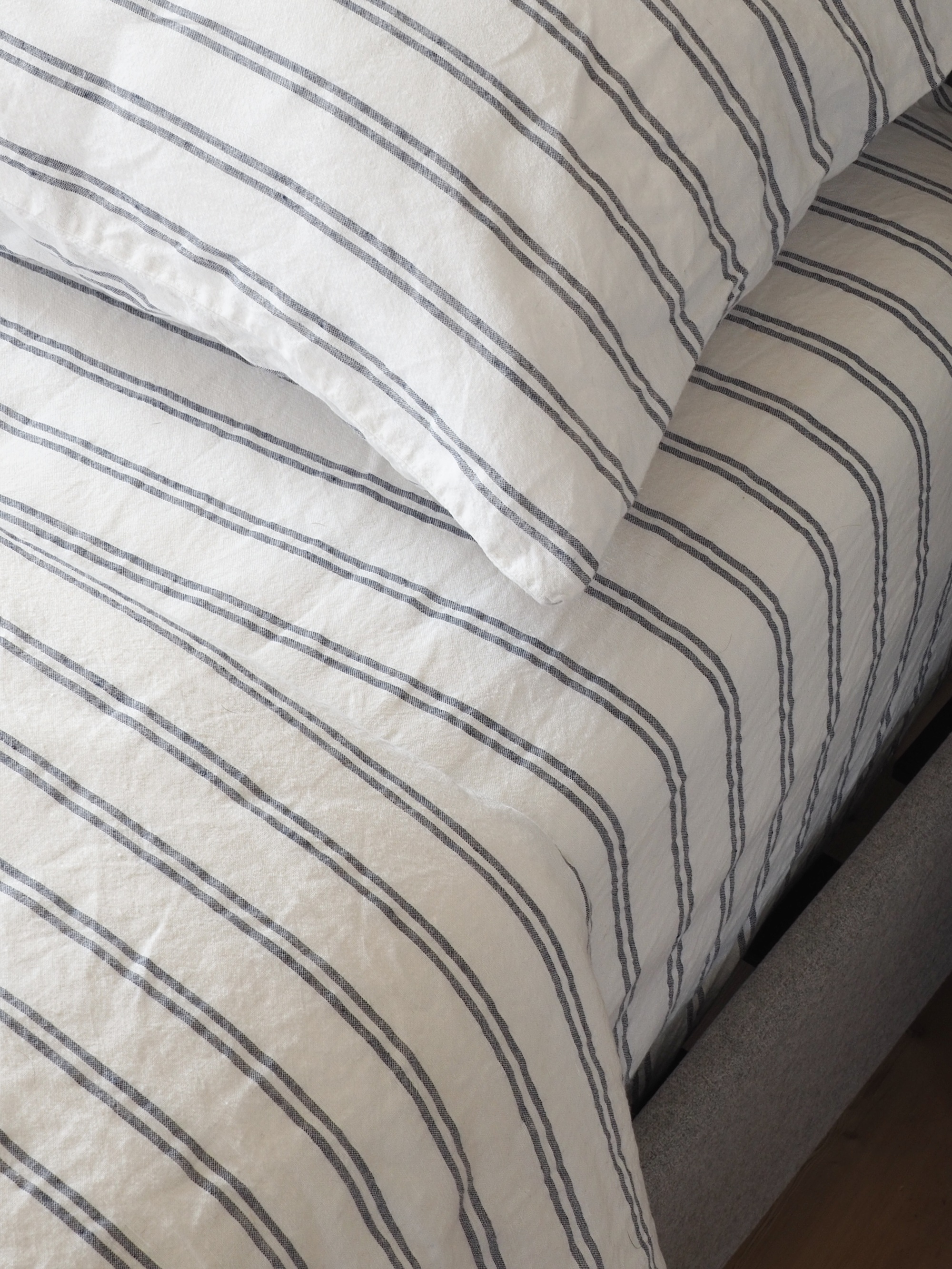
The Piglet in Bed fitted sheet that matched the bedding was also pretty exceptional: strong elastic and deep — my two requirements to fit my big mattress. Having a sheet with good grip makes such a difference to your sleep, so it's always worth investing in a decent one in my opinion.
How Does Piglet in Bed Rank on Style?
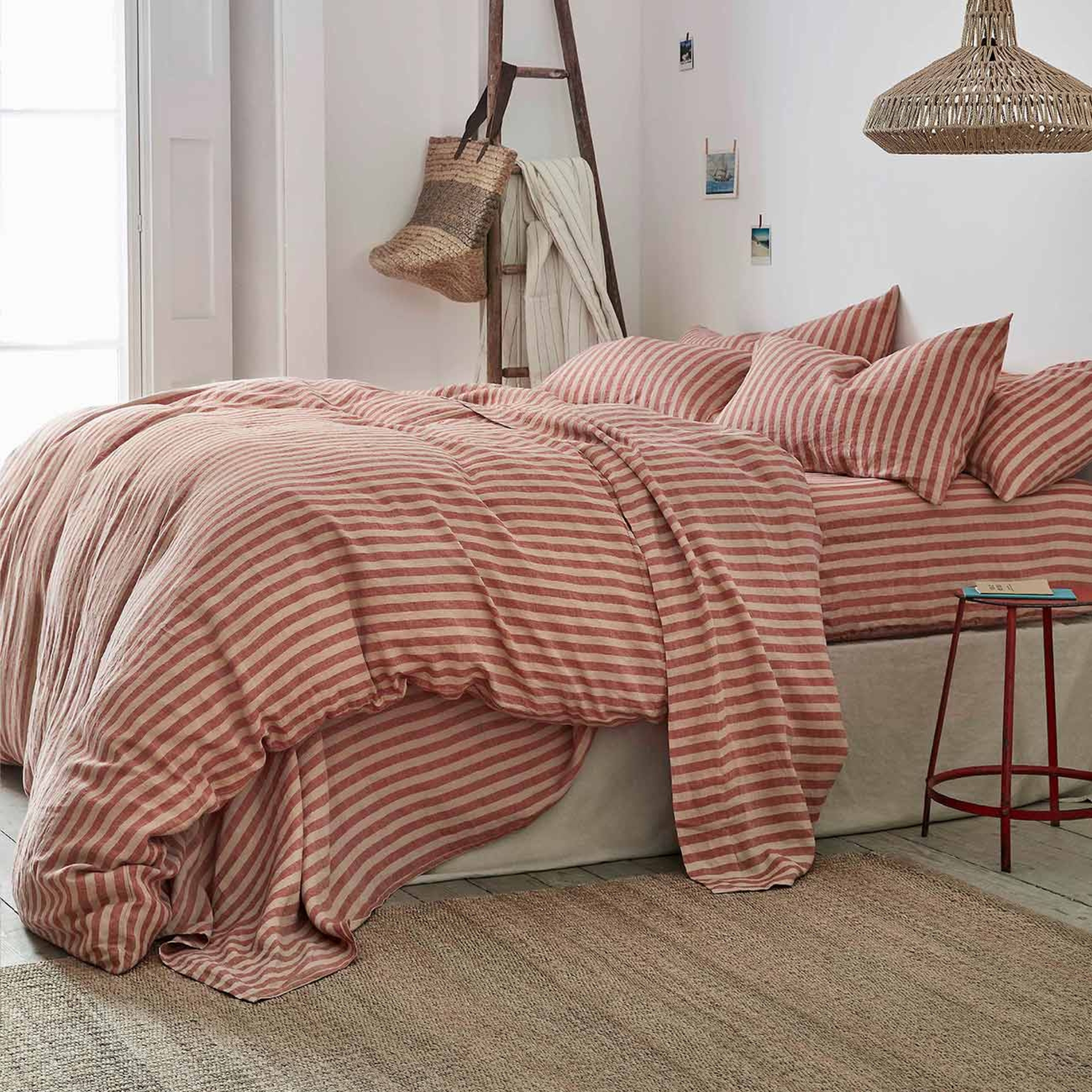
Piglet in Bedding's style walks the line of rustic and humble, with luxuriously layered. Patterns like check, gingham and stripes, and a deep, rich color palette means there's a lot of scope to get creative with the brand's bedding offering.
What I'll say about this specific linen blend bedding is that it has a really nice level of the natural crinkle I love about linen, but that can go a bit too far with pure linen sometimes.
Gingham is a slightly traditional pattern, but this color makes it feel more modern.
Fancy something a little bolder? This deep, rusty orange brings the warmth.
It's not just linen bedding either. The brand's washed cotton has a beautiful, lived-in look.
Is Piglet in Bed Bedding Worth It?
Let's get into the cost. Piglet in Bed's linen bedding runs at a similar cost to most other luxury linen blends such as Bed Threads and Secret Linen Store, however, its linen blend bedding offers a more affordable way in. A duvet in pure linen costs £169, while the linen blend is £139 — not a huge difference, but a fair amount over the cost of the entire bed set.
If you can't get on with natural linen sheets, but you love the look, these are the ones I'd suggest you try. They may not have all of the pros of pure cotton or pure linen bedding, but they're a nice middle ground that gives you, largely, the best of both.







